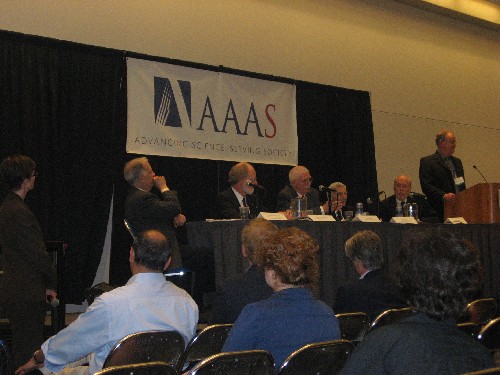
Scientists discuss the needer for greater transparency in climate research
By James Dacey
Those scientists involved were careless and, to prevent this happening again, the research community needs to deal with the threat posed by new types of media. These were the conclusions of Harvard climate scientist James McCarthy when describing two recent climate scandals, which were both fuelled by viral activity in the blogosphere. McCarthy was talking today at the annual meeting of the American association for the Advancement of Science (AAAS), which is taking place in San Diego, California.
Since that email scandal broke back in November, bloggers across the globe have chipped with strong criticisms of the scientists at the University of East Anglia (UEA) in the UK. You will remember that leaked emails revealed the researchers to have “sexed-up” certain aspects of their climate data to fit a general warming trend. Then, in January, came another blow to climate science when it came to light that the Intergovernmental Panel on Climate Change (IPCC) had included in their latest scientific report a near baseless claim that the central and eastern Himalayas could disappear by 2035.
McCarthy, who previously served as co-chair of an IPCC Working Group, strongly emphasized that these were two isolated incidents, with have no impact on the strong scientific consensus over climate change. However, he also recognises that the climate science community could have done more to deal with the allegations before the issues blew-up into fully-blown scandals. He feels that one way to do this is for researchers to start using social media themselves – which includes blogs, Facebook and Twitter – to disseminate research with the public. “I can tell you, a lot of groups are trying to think about creative ways of entering into the discussion,” he said.



